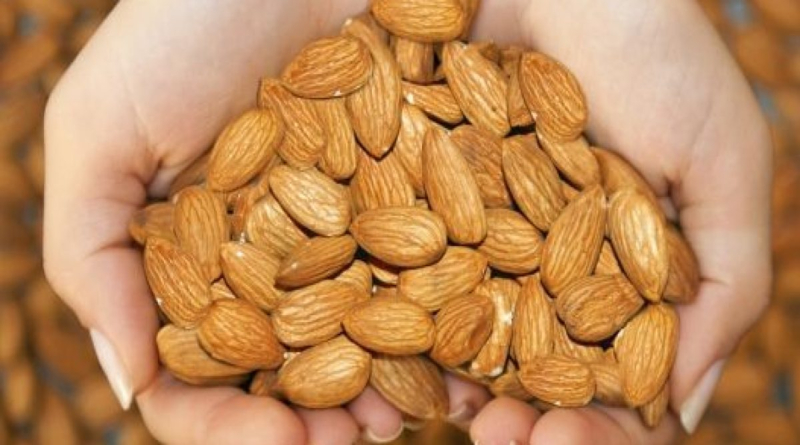Whether dairy-derived or plant-based, protein is an ingredient whose reign shows no signs of slowing down. In this arena, protein fortification is the overarching trend linking two very different segments – dairy and plant-based. Consumer demand for protein-enriched products now extends beyond sports nutrition, to include senior nutrition, weight management and overall health and wellness. It is certainly no longer the domain of the infant nutrition category or “body-building” space. As protein applications expand, however, the focus shifts towards overcoming formulation hurdles. FoodIngredientsFirst speaks with industry experts to find out how these challenges can be conquered.
“Protein has always been a fundamental building block of our diets. Due to growing consumer awareness and accessibility to health and nutrition information, we’re seeing more protein claims being made across more food and beverage categories,” says George Perujo, Director of Product Management, SI Ingredients at Archer Daniels Midland Company (ADM).
Experience has taught ADM that there’s more to formulation that simply ‘‘dropping in’’ protein or flavor, Dechaud points out. “ADM has robust product development capabilities and an extensive culinary team that understands the mechanics of taste, texture and functionality impacts various ingredients have on one another, and how to bring it all together to get customers to market quickly and successfully. We are developing high-protein products by controlling formulation of off-aromatics, mitigating bitter chalky off-tastes and textures and optimizing processing with thermal processing parameters,” he says.
Vicky Davies, Global Marketing Director, Performance and Active Nutrition, FrieslandCampina Ingredients, also notes that protein enrichment is a prevalent trend that is no longer a niche ingredient confined to traditional segments.
“Today’s consumers appreciate protein’s value in building and repairing many types of tissue – not just muscles. They are also looking for maintenance of healthy weight, staying active throughout life, satiety and metabolism,” she adds.
Protein appeals to the senior demographic as well. Health-conscious consumers are becoming increasingly aware of the importance of protein, from those pursuing a physically active lifestyle to the older generations and those who want to enjoy good health in later life, notes Oliver Wolf, Head of B2B Global Marketing & Communication at Gelita. Protein supplementation is particularly important for these groups, he says, as the body uses it to create and repair tissues. Moreover, protein is also an important building block of bones, muscles, cartilage.
In sports nutrition, protein is often used to help the body recover after intense physical activity.
In sports nutrition, protein is often used to help the body recover after intense physical activity, which is why its profile is so important. To achieve maximum recovery, the protein must be high in the three key branched-chain amino acids (BCAA) of leucine, isoleucine and valine, according to Benoit Tavernier, Product Manager Rice Ingredients at Beneo.
“These three essential amino acids can trigger lean muscle recovery. However, as they cannot be built by the human body, they must be received via nutrition. Manufacturers looking to deliver products to active people and athletes must ensure that their products include the right proteins. An example of this is whey protein, which is high in BCAA but is animal-based. Plant-based proteins such as pea and rice, are also very similar to whey protein when it comes to BCAA,” Tavernier adds.
Tackling formulation challenges
Incorporating protein into different food matrices is not always an easy job, largely because it often brings differences in flavor and texture, says Peter Schouw Andersen, Director, Application Science and Technology, Arla Foods Ingredients. This means a great deal of effort in carefully formulating each product is necessary. Depending on the protein sources, different challenges may arise.
According to Sara Bonham, co-founder of Perennial – a beverage brand focused on senior consumers’ nutritional needs – a challenge in the space is that the majority of the protein inputs used in food products are not 100 percent digestible. Some are also an incomplete source, meaning they don’t contain all the elements of a protein the body can actually benefit from.
“For example, many plant-based protein drinks have only one source of protein like pea or rice protein that is around 60-70 percent digestible. This can leave you feeling bloated or in minor discomfort,” Bonham says.
“The industry needs to start thinking about the protein digestibility corrected amino acid score (PDCAAS) and helping consumers understand its importance to help them feel the difference literally, via muscle health and a satisfying feeling after eating,” she notes.
“From a technical point of view, the solubility and texture of plant-based proteins can also be a challenge,” adds Tavernier.
The challenge with protein enrichment is the constant balance between function, taste and advanced processing know-how. While plant proteins have become more widely available and easier to work with over the past five years, it can still be challenging to make a shelf-stable product that enables the protein to remain suspended over long periods of time, Bonham notes.
In the dairy protein sector, some applications and some proteins are definitely easier to work with than others. Normally there are two key challenges: how to get a meaningful amount of protein ingested by the consumer, and how to ensure protein enrichment has minimal impact on taste, texture and visual appeal, according to Davies.
“Milk-derived proteins are very pure, containing up to 90 percent protein, and with highly bioavailable amino acids. This means that the proteins can be used at relatively low addition levels compared to other sources. There are challenges, especially with plant proteins, when it comes to taste and quality, but technological advances are changing this,” Davies notes.
Boosting applications
Arla Foods Ingredients pegs products like yogurt, cheese, protein drinks, cakes and protein bars, as having potential in combining a high protein profile (whey and milk proteins), while retaining good taste and texture.
The challenge with protein enrichment is the constant balance between function, taste and advanced processing know-how.
“Like the protein trend, healthy snacking has been a hot topic in the industry for quite some time, which means there’s a high demand for convenient, on-the-go products packed with protein. Therefore, products like nutritional or protein bars and balls, as well as different forms of sweets and drinks are currently very popular,” says Schouw Andersen.
Consumers are looking for tasty and convenient formats and this trend means that more on-the-go and snack type foods and formats (ready-to-drink and bars) are in demand, notes Davies.
Tavernier, however, pegs cereal bars, beverages and meal replacers as the most important applications for protein enrichment in the current market.
Personalization is an important trend in applications, according to Wolf. “When it comes to supplementation, there is no one-size-fits-all solution. This means it is important that products are tailored to individual consumer needs.”
It is crucial that the nutrient is supplied in the right form, he says, as bioavailability is pivotal. Sports and wellness drinks, smoothies, instant powders and gel shots are all enjoying popularity at the moment, and that trend looks set to continue. “Fortified gummy candies also have huge growth potential. The concept, which is already popular among younger consumers, looks set to expand into the adult market as a convenient and tasty form of supplementation,” Wolf says.
Predicting protein trends
Bonham believes that more fortified products beyond the sports nutrition space will arise. Examples of these include protein enrichment in functional beauty liquids, snacking, dairy alternatives (with protein levels comparable to milk) and the meat space, with plant-based meat alternatives.
According to Perujo, the future of protein enrichment is not just answering consumers’ call for more protein, but going beyond it, and combining protein with other functional health benefits in product formulation. “As more protein-enriched plant-based products compete for market share, those who go beyond protein and incorporate additional value-adds such as functional health claims, clean labels and other nutritional considerations will win in the long-term,” she concludes.
What’s next
Protein is expected to maintain its position as a key ingredient in the industry. As consumers become increasingly aware of what benefits their health and wellness, protein’s wide range of uses may provide ample space for innovative and exciting product development. Despite formulation hurdles, the sector is responding successfully to the demand for better-for-you, health-promoting formulations.
Source: Food Ingredients First










